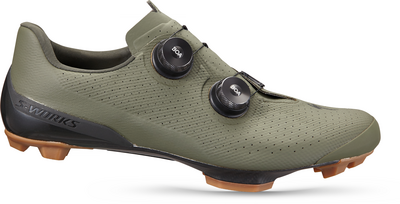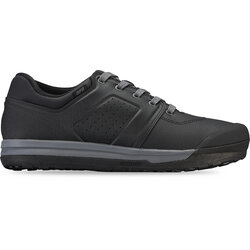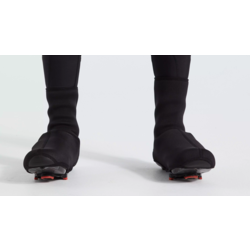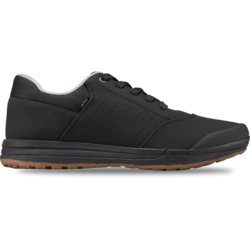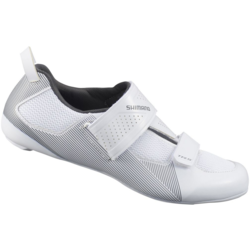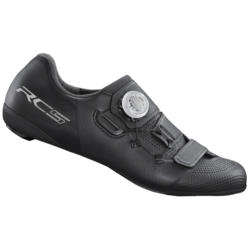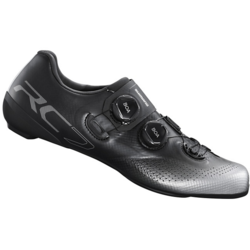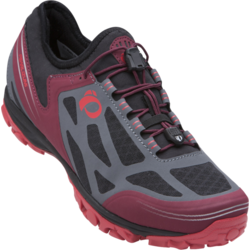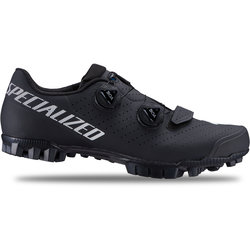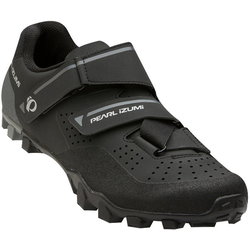All About Cycling Shoes
Put the Power to the Pedals!
Besides selecting a bicycle that meets your specific needs, getting the proper cycling shoes can make a huge difference in your riding. Cycling shoes have stiffer soles to efficiently transfer power from your feet to the pedals and to protect your feet. The lack of stiff soles in sneakers, for example, allows your feet to collapse through the arches while pedaling, which may cause pain, tendon problems and a burning sensation on the bottoms of the feet.
The key differences between cycling shoes and most other sports shoes are:
- Stiff soles for protection from the pedals and to ensure that no energy is lost in transferring power to the pedals.
- A snug fit so that your feet can't move around in the shoes while you're pedaling.
- Little or no cushioning in the soles because this would interfere with pedaling.
- Lightweight, ventilated uppers to keep your feet cool and dry and to keep the shoes lightweight.
- Special fixing points for the cleats, which engage the pedals.
Types Of Shoes & Common Features
Road Riding:
Road shoes have very stiff soles, sometimes made of carbon fiber for extra strength and minimum weight. They usually sport lightweight ventilated uppers made from nylon mesh and are reinforced in places with Lorica or similar synthetic leather. Velcro or ratchet fastening systems are popular so that adjustments can be made "on the fly," tighter for climbing or sprinting, looser if your feet swell or feel uncomfortable.
Racers do not need to put their feet down very often, so having recessed cleats is not important. However, this does make those occasions when you do need to walk a bit awkward. Most racers waddle like a duck or tiptoe across the car park in their clumsy shoes, but once on a bike, the system is excellent; although you do need to check cleats regularly for wear.
Off-Road:
Off-road shoes are also quite stiff and inflexible but not as much as road models. Like the road riders, off roaders want good power transfer through the shoes to the pedals. However, off-road shoes all have recesses for the cleats and aggressive tread patterns for those occasions when it's necessary to get off and hoof it. Some shoes even accept screw-in extra studs near the toes for grip on very muddy trails. Uppers are usually a little more robust than on road shoes, to cope with brushing through the undergrowth. If laces are used, these are usually hidden by a protective tongue. Soggy laces are no fun to untie when you're tired after a tough ride!
Casual Riding:
Shoes for casual riding are manufactured with comfort in mind, and therefore tend to be a little more flexible than their super-stiff racing brothers, as the pressure exerted on them will not be so great and they will be used for much more walking than race shoes. Many tourists choose casual shoes with clipless pedals because of their versatility and they may wear them for long days of riding (or even throughout a prolonged tour) and so appreciate the little extra forgiveness in the soles. Styles vary from boot-like designs to low cut, almost racing-style shoes with some good compromise models in terms of colors, weight and design in the middle ground.
|
How you ride… |
The shoe for you… |
|
You're a casual cyclist who doesn't feel comfortable looking like a gonzo bikie. |
Consider casual cycling shoes, which look more like sneakers. There are even cleated models that work with clipless pedals. |
|
You love rolling up the miles but you enjoy stopping to admire the view almost as much. |
Look at footgear made for touring. It's flexible for comfort with rubber soles and recessed cleats for walking. Off-road styles work, too. |
|
You love off-road rides and races. |
You'll want a lugged sole, recessed cleat, snug-but-comfy fit, light weight, decent sole stiffness (not too stiff) and secure fastening system. |
|
You've been on off-roader but now you plan to get a road-specific bike. |
You may want to continue using your off-road shoes. Just get the same pedals for your road bike that you have on your off-roader. |
|
You're a serious triathlete. |
Check out triathlon shoes, which are designed for high efficiency but also with features to get you in and out quick. |
|
You ride metric centuries and group rides that are more social than competitive. |
You'll do fine with a mid-line road shoe because it'll be more flexible and comfortable than the full-on road race model (see below). |
|
You enjoy hammering on the road with your buddies sprinting for every city-limit sign. |
Get a lightweight, high-end road shoe with super-stiff sole for exceptional energy transfer and extra-secure strap system. |
Fit
Cycling shoes fit more snugly so your feet won't slip around inside when you're pedaling. This is also why you should always wear special cycling socks with your shoes. These are thin so they won't stretch out the shoes, ruining the fit.
You can help maintain the proper fit by stuffing your shoes with newspapers to let them dry properly after rainy/wet rides that soak the shoes.
| Size Conversion Chart | ||||||||||||
| Euro (metric) | 36 | 37 | 38 | 39 | 40 | 41 | 42 | 43 | 44 | 45 | 46 | 47 |
| US Men | 3.5-4 | 4.5 | 5 | 5.5-6 | 6.5 | 7.5 | 8-8.5 | 9 | 9.5 | 10.5 | 11-11.5 | 12 |
| US Women | 5.5 | 6-6.5 | 7 | 7.5 | 8.5 | 9-9.5 | 10 | 10.5 | 11-11.5 | 12.5 | 13 | |
Remember, this chart is only a guidline. It's best to come on in and let us help you choose the proper size and type for your style of riding.
Other Considerations
Proper shoes and clips or cleats working as a unit are important to achieve maximum efficiency in powering the pedals. Be sure your pedals, cleats and shoes are all compatable for maximum efficiency! If you have any questions, be sure to ask us.
When shoe shopping, don't underestimate the importance of trying them on. Some brands run wider than others. Some sole shapes may fit your feet better than others. Some brands run big and some run small. No matter how much you like the look or features of a shoe, a lousy fit can ruin a ride. So, it's always best to come in and try some on!

